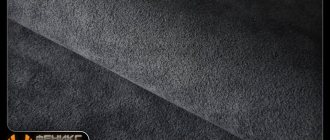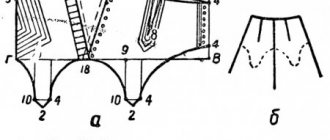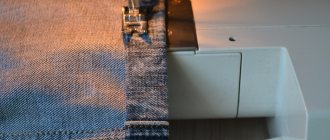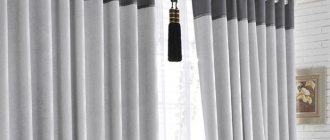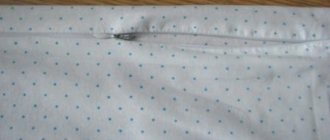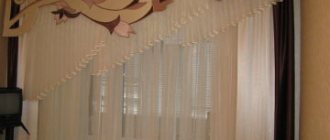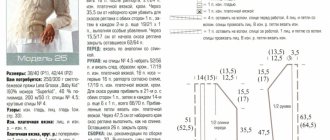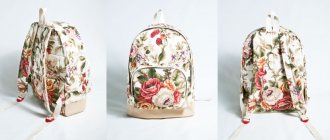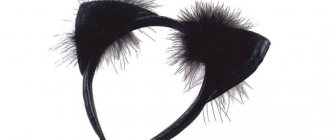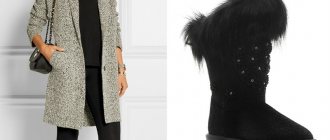In recent years, car enthusiasts have begun to enthusiastically approach the issue of transforming the car inside and out, while flocking the interior is in increasing demand.
This type of tuning is popular in the West and the USA, but the CIS countries are not far behind.
Why not? An element of a car that is covered with flock changes its appearance, becomes stylish and pleasant to the touch.
The technology itself is simple, which opens up ways for savings and the possibility of doing tuning yourself.
What is car interior flocking? What is its technology and essence?
Flocking in English sounds like “flocking”. The essence of such tuning is to apply a special material (flock) to the surface.
The main purpose of flocking a car is to change the appearance of the processed product, give it a modern look and protect it from negative influences.
Interior flocking is considered a new type of tuning. But it is not so. The technique was developed back in ancient times.
The pioneers were the ancient Chinese, who created a craft that resembles the technology popular today.
The Chinese used resin as a substitute for glue, which was applied to certain interior items. Afterwards, the treated area was covered with colored fibers, forming patterns of extraordinary beauty.
Initially, flocking was intended to decorate surrounding things and increase their value.
In its current form, the technology originated in the 50s, when excess production waste (for the textile industry) found application in flocking car interiors.
The essence of the technology is artificial surface treatment with a special coating. Here we are talking about flock, which has a synthetic base, but feels like velvet.
Unlike the latter, flock is more reliable and wear-resistant. In addition, it protects the surface from the negative effects of the atmosphere.
For car tuning, a material consisting of small particles of fluff is used. “Dust particles” of different colors are applied to a surface prepared and pre-lubricated with glue using a flocator.
Preparation of flock consists of cutting the fibers to the required length. If desired, the finished fibers are dyed, which opens the way for creating designs and patterns.
Today it is worth highlighting several flocking options. The most popular is using an electrostatic field created by a flock.
The essence of the “electric” method is that the fibers, after changing color, are amenable to chemical activation, or more precisely, to coating with an electrolyte. This process is necessary so that, under the action of the flocator, the fibers become 90 degrees to the surface being treated.
Making flock with your own hands
You can make relatively inexpensive flock yourself. Industrial waste is used as starting material.
Sawdust flock
When operating a circular saw, sawdust is formed, the length of which is 2...6 mm. They can be sifted out using a regular sieve.
- The resulting sawdust should be painted. To do this, use pigment in the form of a paste.
- The sawdust is poured into a container and thoroughly mixed with the pigment.
- Allow to dry, it may take up to two days until completely dry.
- Dried colored sawdust is ground.
- A colored powder is obtained. Elongated fragments predominate here.
This flock is quite hard; it is used to treat surfaces that are not touched by hands or objects during use. Minimum price. They are often willing to pay extra to someone who picks up sawdust from a working machine.
Foam flock
- Foam rubber is a soft material. To use it, it must be crushed. The easiest way to perform this procedure is to first freeze the foam rubber.
- Fragments of the workpieces are soaked in water and then placed in the freezer.
- Frozen particles are ground using a regular grater. You can use a feed crusher (the main thing is to do the work as quickly as possible so that defrosting does not occur).
- Coloring is done as you would with sawdust.
- After drying, a soft flock of the desired color is obtained.
Video tutorial on flocking.
What is flock?
Flock, as it became clear from the last section, is a material that is waste from the textile (polymer) industry.
If translated literally from English, “flocking” means a bunch, combs made of cotton fabric, shreds. Fibers cut to the required length are called “flock”.
The role of raw materials for manufacturing is played by plastic, acrylic, viscose. Sometimes cotton, wool, polyamide and other materials are used.
The photo shows a flock with a flocker.
Flock, as a processing composition, differs in thickness, color and length. It is practical and easy to use, and its characteristics are similar to genuine leather.
It also has a number of advantages - the ability to “breathe” in hot weather and not “tan” at sub-zero temperatures.
Flock is pleasant to the touch, does not get wet, has heat-insulating properties and does not stain other fabrics.
If desired, it can be coated with special colors.
Today it is worth highlighting several types of flock, which are classified:
1. According to the material:
- Polyamide flock. Advantages: elasticity, ability to recover after taking loads, stylish appearance, wear resistance. Thanks to the listed qualities, it is used for flocking cars;
- Viscose flock is used in tuning (though less often) and for creating original products (velvet boxes, caskets and others). Pros: ease of processing, ability to paint.
Minus - inability to return to shape in case of heavy load;
- Polyester flock. Feature - durability, resistance to moisture and sunlight. The downside is the difficulty of painting, which limits the choice of color palette;
- Acetate flock. Unlike the viscose type discussed above, acetate flock has less wear resistance and wears out over time. Advantages: plasticity and resistance to critical temperatures. This flock is used for processing artificial fur and interior elements.
2. Length:
- 0.5 mm. This flock has minimal consumption and is used in mass production of products without specific requirements for wear resistance. The material is used for processing rubber seals. Often products with a length of 0.5 mm are mixed with 1 mm “brothers”, which reduces their cost;
- 1.0 mm. This flock length is considered the most common. With its help, various surfaces are processed - wood, metal, glass, plastic, and others. The advantages of 1 mm material are pleasant to the touch, minimal risk of defects, ease of application. Used for flocking car interiors;
- 2.0 mm. The main advantage of flock is protection against abrasion. Products of this length are mixed with 1 mm flock, which makes the appearance original. 2 mm material is used for various purposes (primarily for decorating interior design).
3. By thickness:
- 0.9-22 dtex (measurement standard in the textile industry, characterizes the density of the fabric). The material of this thickness is wear-resistant, does not wrinkle, is soft to the touch and has a velvety appearance. Flock with a thickness of 3.4 to 6.8 dtex is used to create drawings, inscriptions, tuning car interiors, decorating packages and small-sized elements;
- 22-24 dtex. This flock is useful where wear resistance is required (for example, for covering carpets).
It is worth considering the pattern that the higher the dtex parameter, the harder the surface is. If we take flock with a parameter of 3.4 dtex for comparison, then it is softer than flock with 6.8 dtex.
When it comes to flock colors, there are many options. In recent years, fluorescent and matte shades have been increasingly used. The palette itself includes more than 20 colors, which simplifies the choice.
Application
Flocking is applied:
- for decorating the car interior: covering inter-glass pillars, rubber glass seals, scratched, broken elements, damaged ceilings, door and other interior elements;
- for decorating textiles;
- for decorating printed products;
- for decorating souvenirs and packaging;
- and etc.
Advantages and disadvantages of flocking
Flocking the car interior has a number of features. The advantages of this type of tuning include:
- Originality of design, giving the car interior style and originality. This is due to the convenience of combining colors, applying logos or creating original designs.
- Color preservation for many years. Flocking has a solid resource and is not afraid of sunlight. In addition, flock does not fade over time, does not darken or lose shade.
- Resistant to temperature changes. Almost all surfaces wear out over time. The exception is flock. This material does not melt under high temperatures, is not susceptible to cold weather and, as already mentioned, does not wear out over time.
- Inability to absorb unpleasant odors. One of the main advantages of flocking a car interior is its immunity to odors. The renewed surface is not able to absorb dust, stench and cigarette smoke. In addition, the flocked surface has an electrostatic charge, which ensures that odors and dust are repelled even after 10 years of use. If a smoker drives, the flock will still remain fresh and clean.
- Sound and thermal insulation. Coating surfaces in the car interior with this material solves a number of problems in winter and summer. In the first case, the car stays warm longer, and in the second, it stays cool. In addition, less noise gets inside the car. This benefit of car interior flocking is often overlooked.
- Moisture and fire resistance. Flocking is an option for people who value security. Flock for car tuning is based on polyamide or polyester - materials that absorb water and do not ignite.
- Easy to care for. To care for the treated surface, you should use a cleaning detergent.
The disadvantages of flocking include:
- The high cost of this type of tuning. Not every car enthusiast can afford it.
- The surface is electrified (typical for some types of flock).
- The structure of the material is destroyed under the influence of products containing alcohol.
Preparing the premises
Flocking involves the use of glue and special fibers (acrylic, polyester, polyamide). In order not to cause harm to yourself or others, the entire process of transforming things should be carried out in a separate non-residential room with excellent ventilation . An apartment or house, even if you plan to work without attracting additional labor, will not be suitable.
In addition, you need to take care of air humidity . It should not be very dry, as this can lead to drying out of the pile, and, as a result, its uneven application. The optimal option is about 50%. It will also be good if you can provide a constant air temperature in the room - approximately 23 degrees.
Don't forget about fire safety standards. You should always have a fire extinguisher in your workshop, preferably a powder one.
Also in the room, each employee must have an individual set of protective clothing that protects against harmful compounds.
Equipment and materials used
Before starting work on flocking the car interior, you should prepare:
- Flock. Volume plays a major role here. For processing 6-8 sq. meters of surface it is worth preparing 1-1.2 kilograms of flock. The cost of purchasing the material is 1000-1500 rubles. When choosing, you should pay attention to the material and color. The most expensive and high-quality is polyamide. Popular colors are gold, silver, bronze, blue, white, black.
- Flocator. When choosing, it is better to give preference to devices that provide power control and radius settings. When the power is reduced, the intensity of the flyaway is reduced, which guarantees accuracy when creating complex patterns and designs. The cost of a flocker ranges from 5 to 50 thousand rubles. The optimal price range in which flockers are sold is 15-20 thousand rubles.
- Glue. The composition of the adhesive required for flocking depends on the material used, usually plastic, metal, glass or textile. The adhesive option also depends on the type of application. Popular methods are dipping the element, using a brush or roller. In tuning car interiors, a brush is most often used. The cost of purchasing suitable glue is 800-1000 rubles.
- Auxiliary elements - primer, color, sandpaper and others.
Technology selection
The first thing you should do if you are thinking about starting such a business is to decide on the status of your business : is this a creative service or a craft one.
The following indicators will directly depend on this :
- The price of the final product for the client.
- Quality level.
- Production standards for a certain period of time.
If you plan to position yourself as a design organization , that is, to apply flock to clothes, shoes, bottles of luxury cosmetics, decorations for home and office, then you will need to involve an artist. Absolutely anyone can master flocking technology if they wish, but not everyone can develop and transfer beautiful images to objects.
In the event that you plan to opt for the second option and open a kind of craft workshop for flocking (transforming wallpaper, furniture, creative studios, car showrooms), then you will need slightly different specialists. First of all, they must be responsible and do their work as carefully as possible. The artistic component in this situation does not play a big role.
Work order - instructions
When the listed tools are prepared, it is worth starting the flocking itself.
The sequence of actions is as follows:
- Choose a room for processing. The main requirements are sufficient lighting, ventilation and comfortable air temperature (20-25 degrees Celsius).
- Dismantle the part being processed.
- Wipe the surface from dust and dirt. At this stage, it is worth inspecting the surface for defects and damage.
- If dents, breaks or cracks are found, putty and smooth the surface using sandpaper.
- Coat the knot with a primer that improves the effect. The product is sold in two forms - aerosol or solution. Purchase costs - 400-500 rubles per 100 ml.
- The plastic part should first be degreased with alcohol or white spirit, after which you should start flocking the interior.
- Dilute the glue and color it with dye. Thanks to the use of color, it is possible to disguise elements of the part that are inaccessible to the flocker. In extreme cases, you can use a brush
- Apply glue to the part that is being flocked. If the goal is to make an original pattern, then the space for flocking should be prepared in advance. To do this, use tape.
- Prepare the flocking composition by pouring the “blanks” into the flocker.
- Set the required power to the device and get to work. The flocator should be kept at a distance of 12-15 centimeters from the surface, which guarantees uniform application of the composition.
- Once the first layer is applied, the surface is blown off with a hairdryer, after which the second layer is applied. As soon as the product dries, carry out the finishing treatment with a vacuum cleaner or brush.
- The schematic diagram of the work looks like this.
If the technology is strictly followed, flocking will be smooth and beautiful to look at.
Usage
Read about: special textile treatments: description of the main types.
Considering its positive impact, it is not surprising that flocking is often used when products need to exude high quality and exclusivity. For example, in high-end packaging, book covers, brochures, advertising and Christmas cards.
Another advantage of flocking technology: the surfaces of various materials can be completely (fully covered) or partially flocked. This opens up almost unlimited uses.
- The flocking process is used on items ranging from retail consumer products to products with high-tech military applications.
- Examples of end uses for flocked fabrics in home furnishings include carpeting, upholstery fabrics, blankets, bedspreads, books and toys, and wall coverings.
- In clothing, flocked fabrics are used for shoes, hats and clothing.
- Industrial Uses - Automotive fabrics, conveyor belts, air filters, military jump suits and many other products that must withstand intense daily use.
wallpaper with flock
Flocked products can be washable, dry cleanable, flame retardant, water repellent, stain resistant or light resistant, depending on the specific requirements for each.
Characteristics are often related to the capabilities of products. These include:
- Decorative and visual applications (walls, coverings, jewelry, clothing).
- Friction modification.
- Soundproofing and insulation (music studios, vacuum cleaner body).
- Thermal insulation and thermal stability (blankets, upholstery, curlers).
- Increased surface area for evaporation and filtration (building panels, humidifiers).
- Liquid retention or splashing (paint varnishes, makeup applicators).
- Buffering and polishing (jewelry packaging, lamps and ornaments).
- Gasket and protection.
Features of the work - what is worth knowing?
When flocking, consider the following:
- Before applying flock, clean the treated surfaces from dust and dirt;
- It is not recommended to flock interior parts that have scratches, chips or cracks;
- Cover the surface with flock only after thorough processing (cleaning) of the part;
- If stains appear on the flock, remove them immediately. If they dry out, it will be more difficult to remove the contamination. The algorithm of actions is as follows: moisten the material with water and go over problem areas with a soft sponge. The use of soap solution is allowed;
- Clean the surface with a napkin or towel. It is allowed to use a brush with soft bristles.
The relevance of the development of this business
Flocking as a business, with a competent and responsible approach, can provide a constant solid income. Currently, this area is not yet very developed, and therefore the number of competitors in the market is minimal. If you carefully delve into the essence of the issue, you can come to the conclusion that the technological process is not as complicated and expensive as it might seem at first glance. But people’s interest in such unusual things is simply enormous, so there will definitely be no end to customers.
A description of the technology and features of doing business are discussed in the following video:
Reviews from car owners
The advantages or disadvantages of flocking a car are best described by reviews of people who have tried this type of tuning:
1. Dmitry, 30 years old, Moscow, VAZ 2108.
“After picking up the car from the workshop, I couldn’t be happier. The cabin immediately became more comfortable and even warmer in winter. Dust still collects, but due to the fact that the flock is light, it is not visible. Treat the surface with a damp sponge. I fight dirt with furniture cleaning compounds.”
2. Igor, 36 years old, Sevastopol, Volkswagen Passat.
“In the car I covered the plastic structures, doors and dashboard with flock. They say that flocking the interior protects against noise, but I personally did not notice it. Actually, I don't need this. The salon looks five stars and evokes a lot of positive emotions every day. The only negative is the higher costs ($500).”
3. Egor, 45 years old, Tomsk, Lada Kalina.
“The decision to flock the car’s interior took a long time, but the mechanic at the service station proved the promise of such tuning. He treated the flock on one of the cars with a rag soaked in gasoline and tried to tear off the material. No damage. But I believe that the main thing here is to choose an experienced master.”
4. Evgeniy, 29 years old, Krasnodar.
“I did flocking on a Toyota Prius. For several months now I can’t get enough of it. Friends and acquaintances who get into the car for the first time are surprised, my wife and children are happy. I don’t regret spending the money yet.” Evgeniy, 29 years old, Krasnodar.
